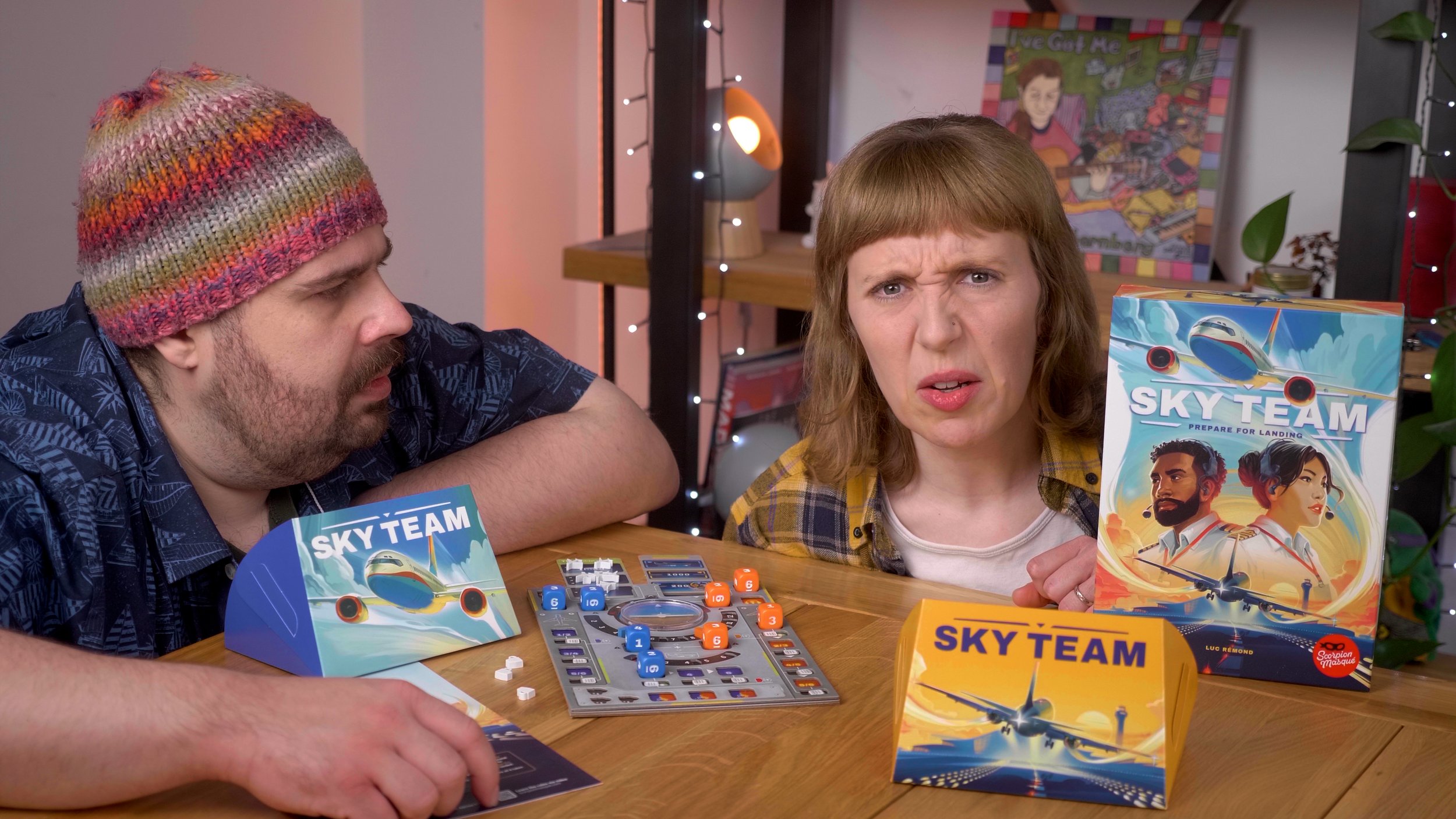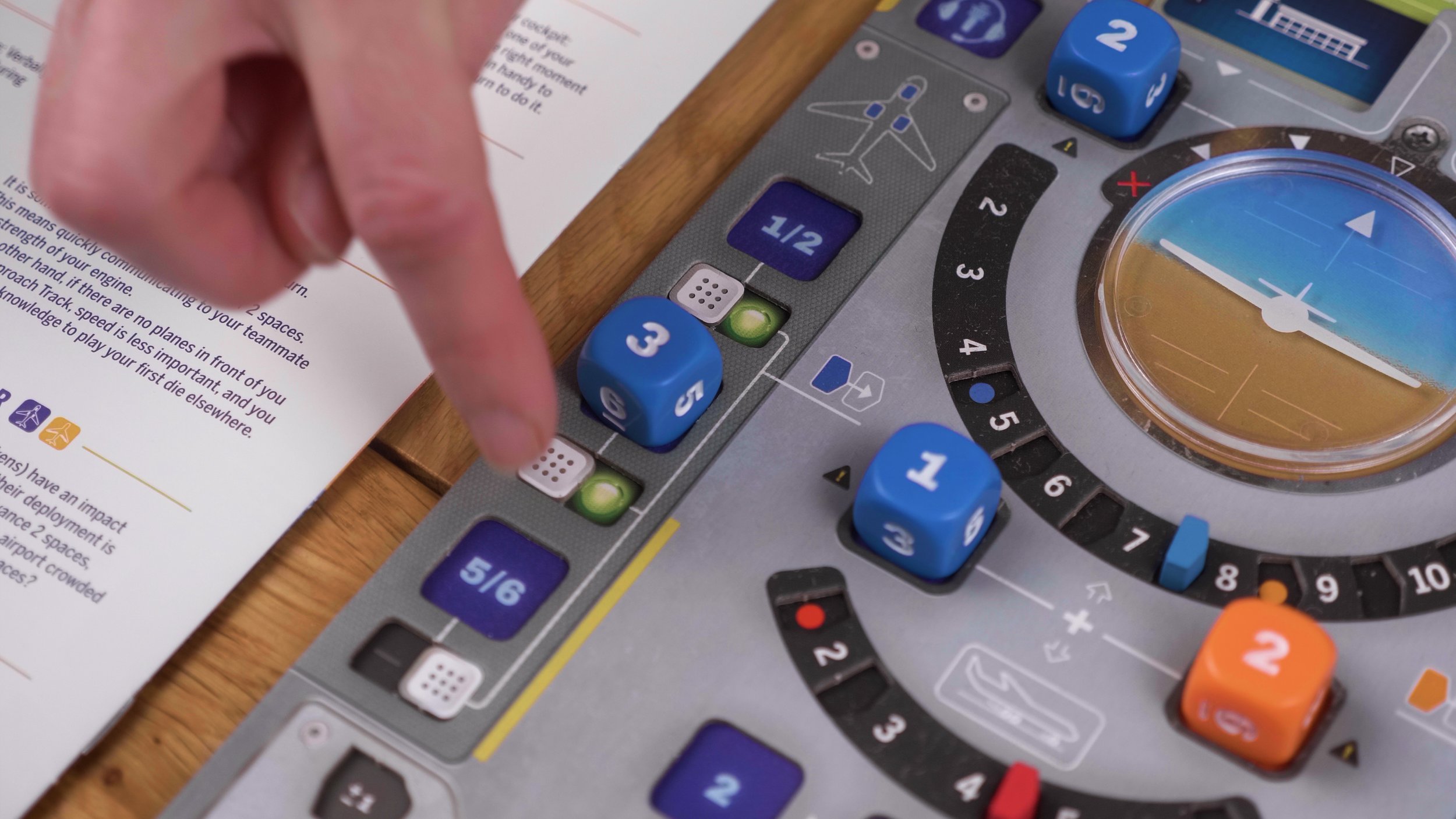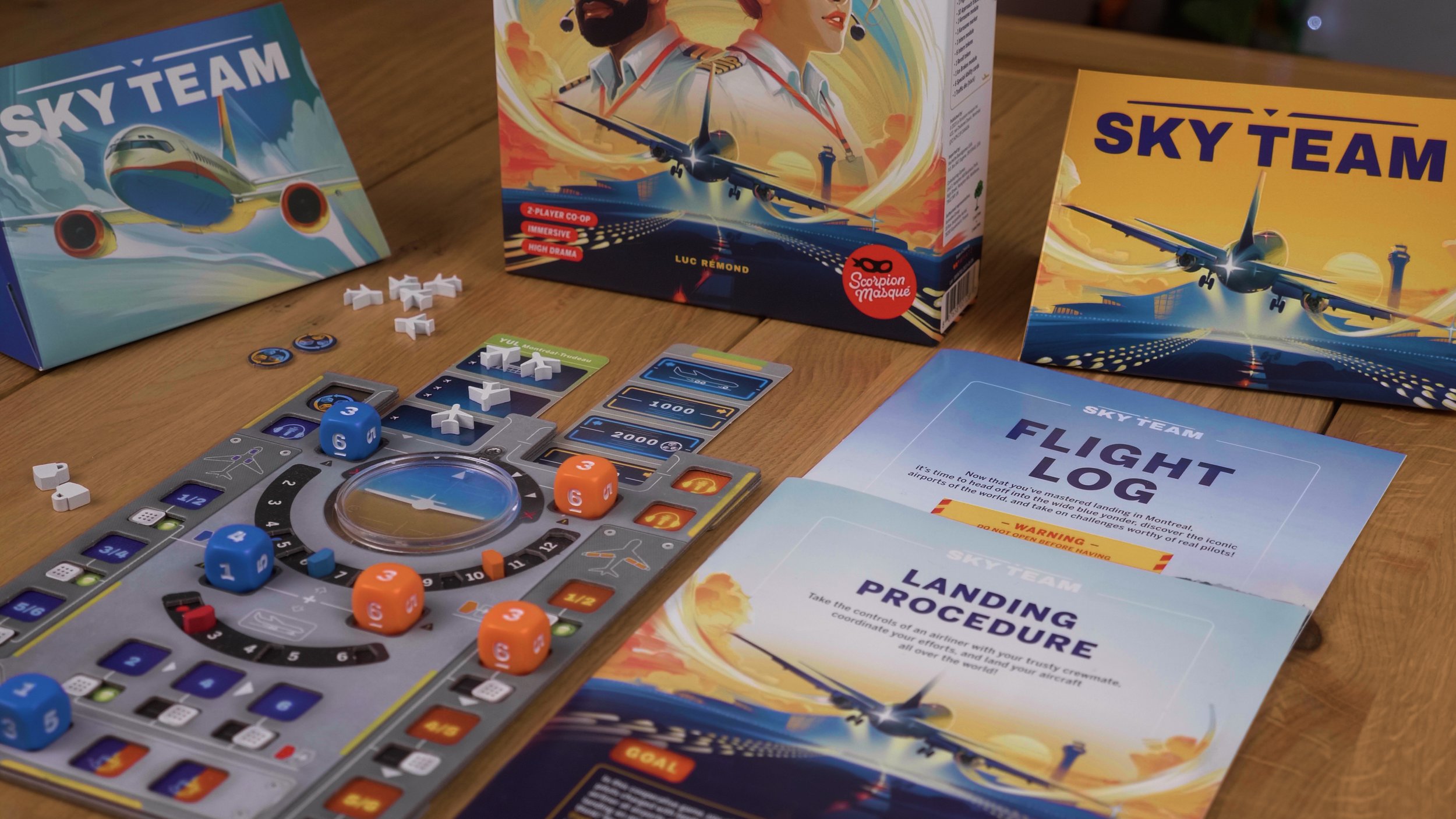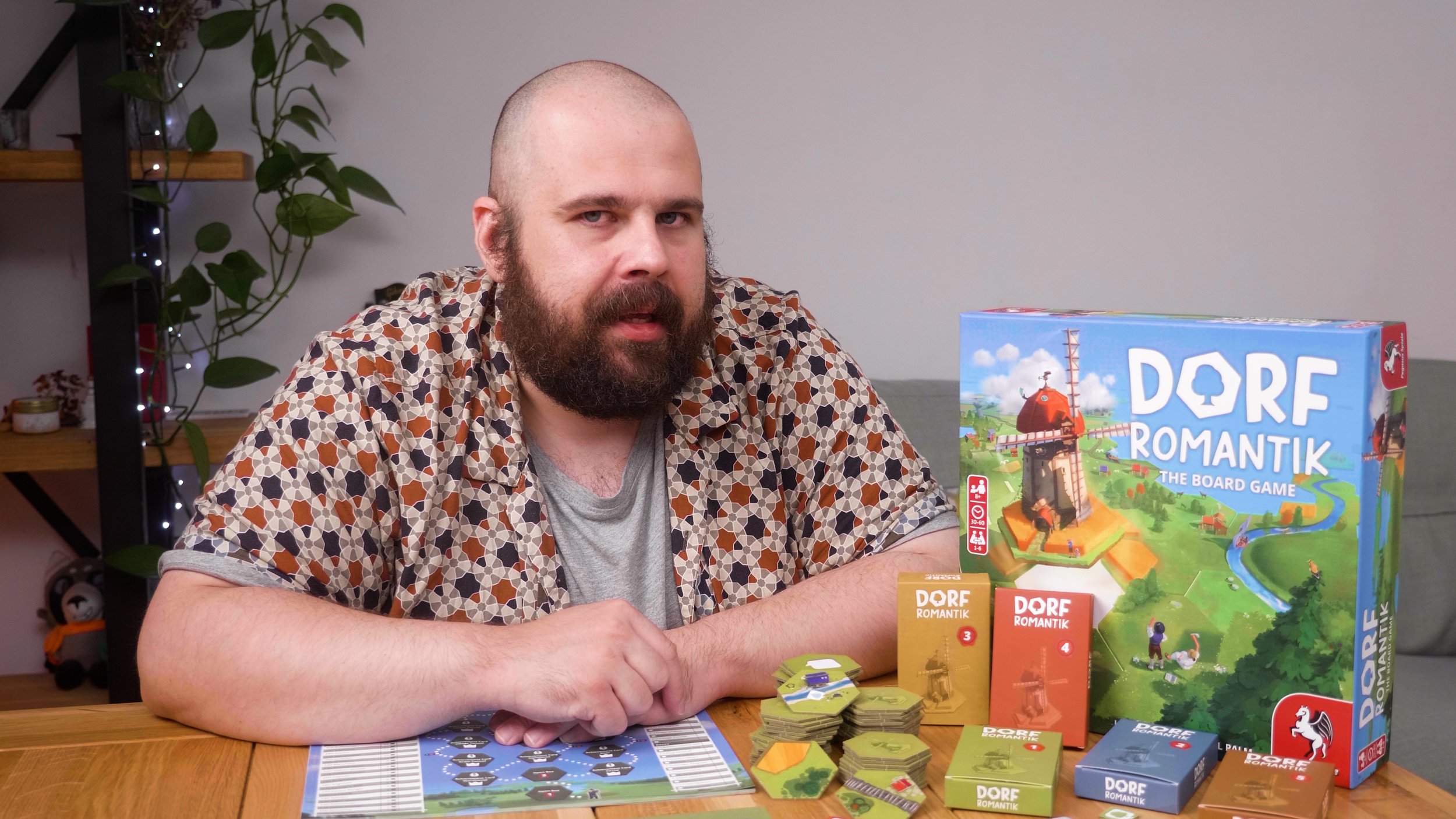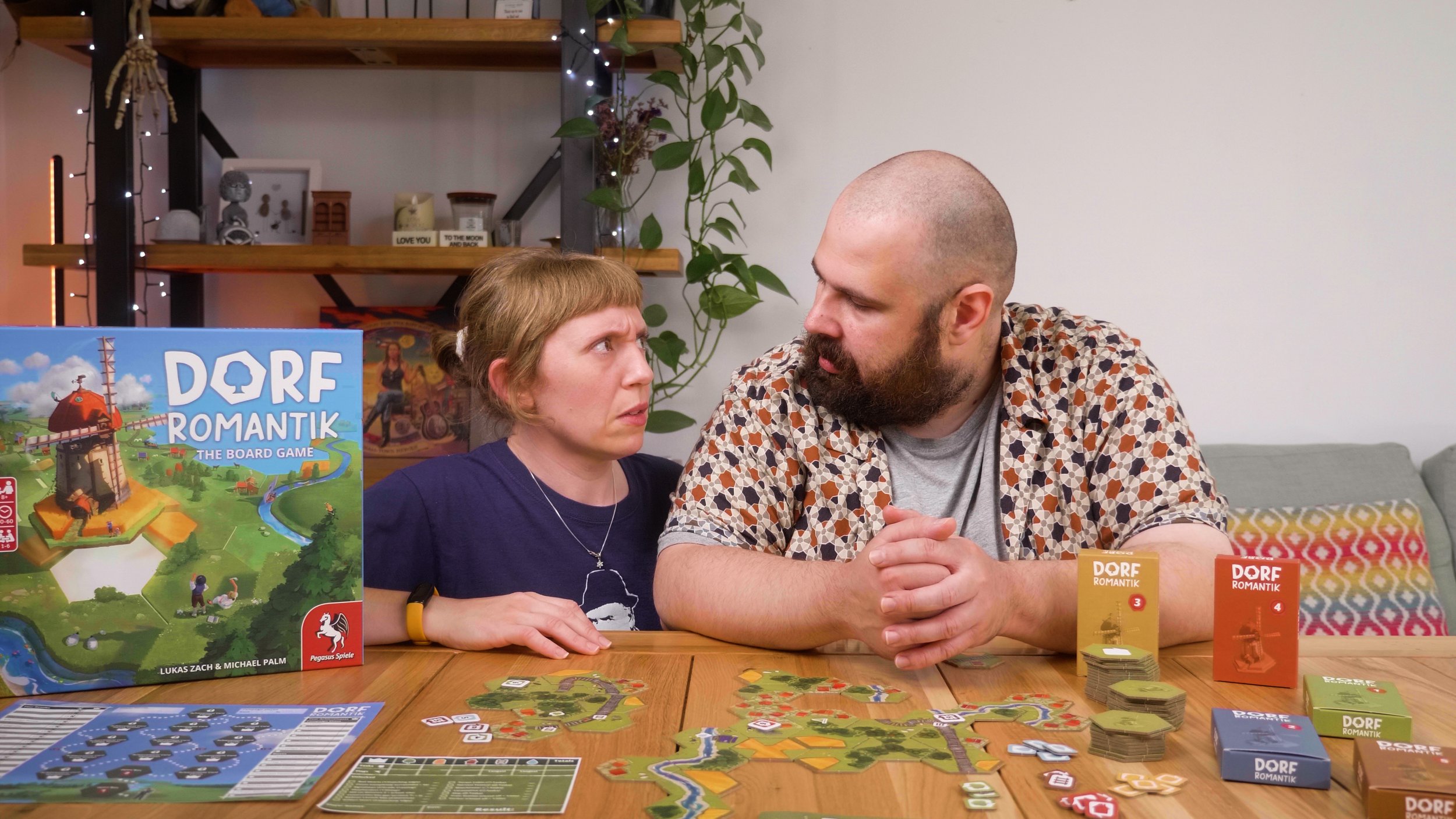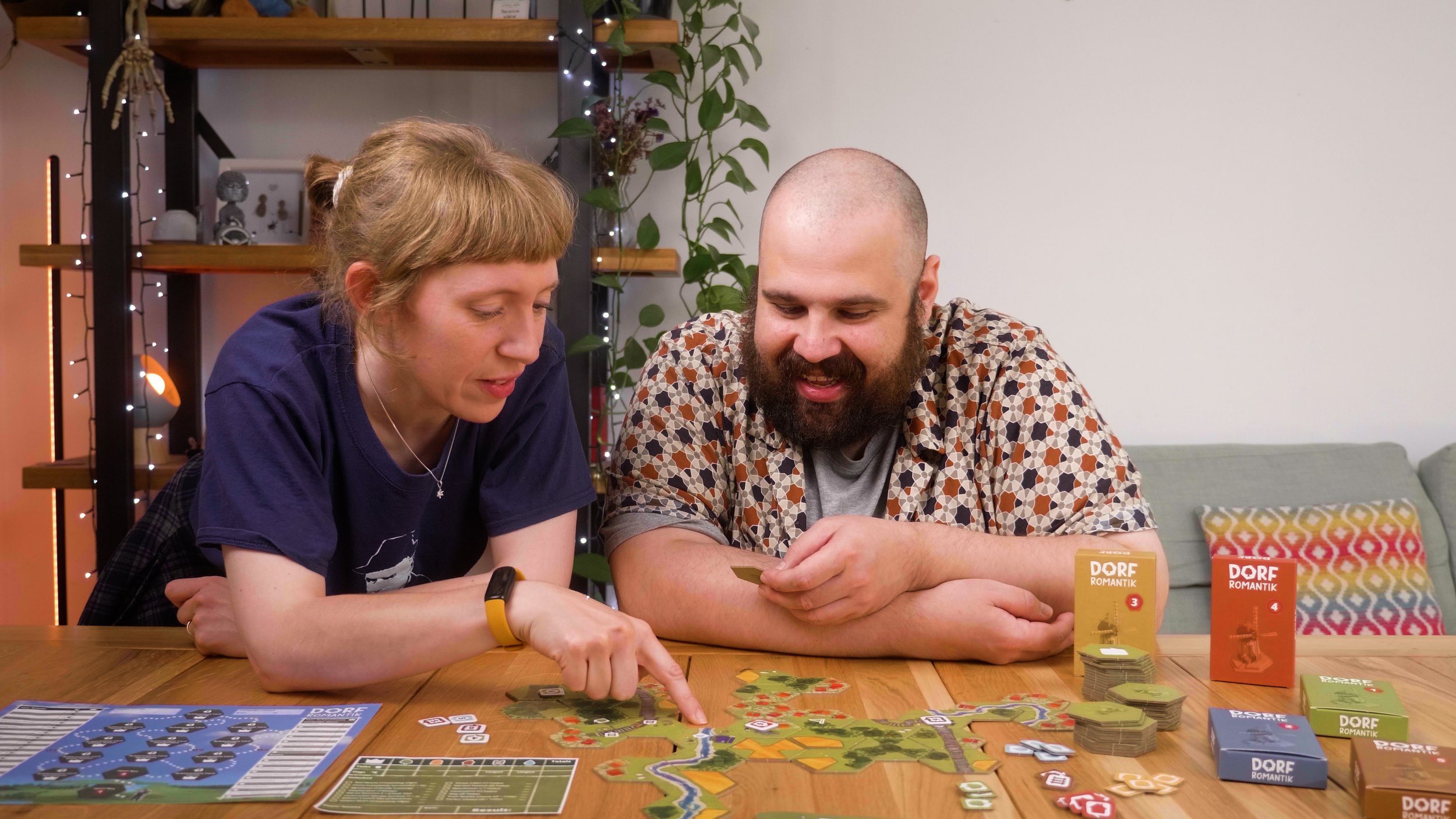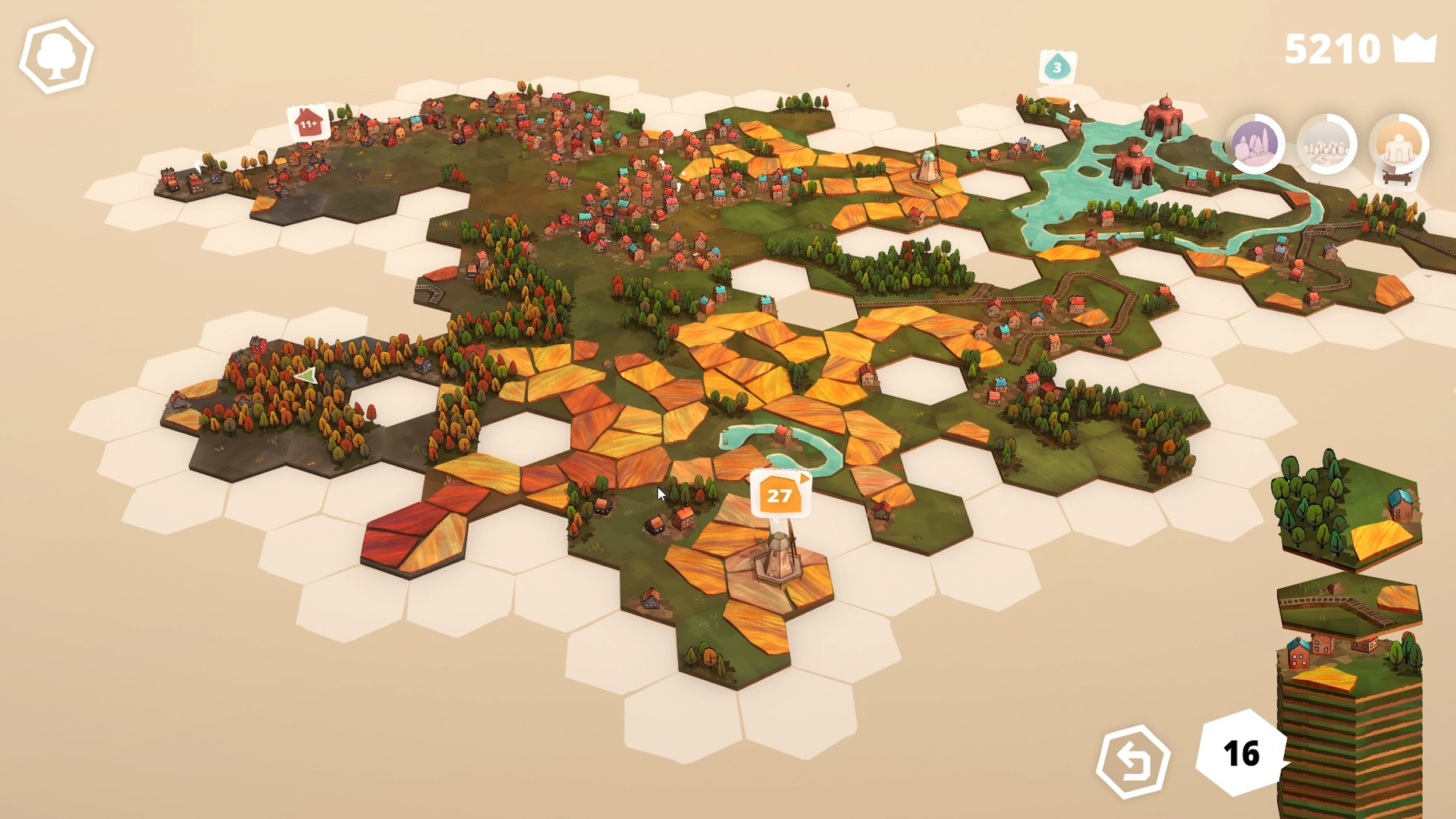Still in silence! Until that very last die placement where you’re finally allowed to high five each other and go OMG that was perfect! How did you know I still had a four behind my shield when you put a 3 down on speed?
Or the alternative to that, where someone makes one misstep, like the co-pilot forgetting that they need to shoot down an aeroplane and instead putting the die down to retract the flaps. And the mad silent scramble by both players to somehow find a fix before they literally cause an international catastrophe.
Last year everyone’s darling was Heat, a racing game that didn’t simulate racing, but high drama movies about racing.
Sky Team, along with obviously being a future mega-hit, does exactly the same thing. It simulates not actual aeroplane landings but movies about aeroplane landings.
You’re not playing a pilot, you’re playing Tom Hanks, Denzel Washington, maybe even Gerard Butler or Tom Butler.
Elaine: Who’s Tom Butler?
Efka: He’s the actor that plays the pilot in Snakes on a Plane.
Elaine: Oh. Why Snakes on a Plane?
Efka: Cause we needed a segue for the criticisms.
This isn’t gonna be long, don’t worry. My only real criticism is that Sky Team is incredibly precise and particular with the timing of actions. You move forward at the exact moment when someone places the second die on the speed action for example, not at the end of the round.
There’s a reason for that, it lets you set up more strategic moves. If you can’t shoot down the aeroplane that’s two spaces away because you’ve only got dice with like ones or sixes, you can move forward one space, and now your 1 die is eligible to take that enemy passenger plane DOWN!
But that sort of thing can be very fiddly during the portion of the game that has to play out without people talking to each other so when someone forgets - it’s tense, tense, TENSE… Oh wait you forgot to move your flap marker. No longer tense.
Aside from that, I mean, it’s a dice game where you roll dice and the values matter. So at easier difficulty levels, it’s tuned quite well towards that communicating without communicating action. Whereas with the really difficult scenarios, it’s just, did we roll the right dice? No. Okay. Let’s try again I guess?
Which isn’t really a criticism. Sky Team is an experience game. You can get better at it, but you don’t play it to get better at it. You play it for kicks, and let me tell you, this aeroplane’s got legs.
Also, don’t play this with strangers. In fact, don’t even play it with like acquaintances or co-workers or virtually anyone with whom you haven’t developed a level of comfort where you can just chill in each other’s company. Sky Team relies on intimacy to create that tension, so a disaster in the wrong hands.
